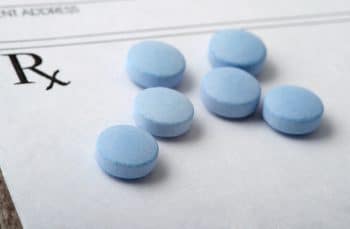Hydromorphone

What Is Hydromorphone?
Hydromorphone is the generic version of brand name prescription Opioids, Dilaudid® and Exalgo®. It is derived from Morphine found in the Opium poppy plant. However, the byproduct is more than twice as potent; 30 mg of Morphine taken in pill form is equivalent to approximately 7.5 mg of Hydromorphone. The medication belongs to a category of Opiate analgesics that can relieve pain yet have potentially deadly side effects in the central nervous system (such as reduced breathing and heart rates), especially when taken in larger doses. For this reason, prescription Opioids are involved in 46 overdose deaths every day in the U.S.
Categorized as a Schedule II substance with high dependence and abuse potential, physicians today are more careful about writing Hydromorphone prescriptions. The U.S. Opioid prescribing rate has fallen from 2012 to 2017, hitting its lowest point in more than a decade at 58.7 prescriptions per 100 people. As such, the illicit supply of the medication is usually secured by doctor-shopping (visiting multiple doctors for prescriptions), forged prescriptions, armed robberies, heft of pharmacies and nursing homes, smuggling from other countries, and online via the dark web. In 2013, the Drug Enforcement Administration reported the street price of 4 mg of Dilaudid can cost as much as $100 per pill in some areas of the country.
Common Street Names for Hydromorphone include:
- D
- Dillies
- Footballs
- Juice
- Smack
Effects of Hydromorphone
Hydromorphone is typically prescribed as a pill taken every 4 to 6 hours for the management of round-the-clock pain over a long period of time. Because of their relative strength in comparison to other prescription pain relievers, Hydromorphone is generally reserved for severe pain treatments, and not for patients with “as needed” pain medication or for recovery from surgery. It is also used for those who have become so tolerant to the effects of weaker Opioids that they are no longer providing the desired effects.
No matter how they enter the body, all Opioids travel to the brain and bind to specific receptors. They also interact with Opioid receptors in the spinal cord, gastrointestinal tract, and other parts of the body. In up to 30 minutes (when taken by mouth in pill form), these interactions reduce the perception of pain and produce sensations of euphoria. However, the euphoric sensations generally only occur in non-Opioid tolerant individuals, those who have not been taking the medication for very long, or those who have recently increased their dose. Its pain-relieving properties usually last 5 or more hours.
Other effects of Hydromorphone include:
- Drowsiness
- Mental confusion
- Nausea
- Constipation
- Stomach pain
- Flushed skin
- Heavy sweating
- Itching
Hydromorphone Addiction
When taken for a prolonged period of time, Opioid medication may become habit-forming. Anyone can become physically and mentally dependent on Opioids due to the way they interact with the brain’s reward response system. Opioids trigger the release of dopamine (people feel this as a warm rush or sensation of well-being). Repeated use desensitizes the body to their effects, and, in time, the body becomes reliant on Opioids to function normally. This can lead to the establishment of an addiction–not everyone who uses or misuses their prescription will become addicted.
An Opioid addiction (also known as an Opioid Use Disorder) involves uncontrollable drug-seeking behavior that persists despite negative consequences. An individual suffering from addiction is not able to stop even though they are typically aware of the damage they’re doing to their own life, as well as the lives around them. Some people may take too much and experience an overdose.
Symptoms of Hydromorphone overdose include:
- Extreme drowsiness
- Loss of consciousness
- Cold, clammy skin
- Pinpoint pupils
- Slowed or stopped heartbeat
- Slowed or stopped breathing
- Seizures
An Opioid overdose can be reversed with Narcan (Naloxone) if administered fast enough to the overdosing individual.
Hydromorphone Abuse Statistics
In 2012, there were 3.9 million Hydromorphone prescriptions dispensed in the U.S..
From 2008 to 2011, emergency department visits related to the abuse of Hydromorphone increased 33% to 18,224 visits.
In 2012, the National Forensic Laboratory identified 4,242 Hydromorphone drug items, over a thousand more than the previous year.
Hydromorphone Withdrawal
If a person dependent on Hydromorphone stops taking it (or reduces their dosage), they will experience withdrawal symptoms that have the potential to be fatal. Accordingly, medically-supervised detox is recommended for people who have abused Opioids. Detox centers are able to prescribe addiction treatment medications (like Buprenorphine) to ease painful withdrawal symptoms and encourage completing a rehab program.
Symptoms of Hydromorphone withdrawal include:
- Muscle and bone pain
- Chills
- Sweating
- Anxiety
- Depression
- Insomnia
- Increased heart rate and blood pressure
- Dilated pupils
- Teary eyes
- Runny nose
- Frequent yawning
- Nausea and vomiting
- Diarrhea
Detox From Hydromorphone
Struggling with an addiction can be devastating, but there is hope. Rehab programs and addiction treatment centers across the country are equipped to guide people to recovery. Contact a treatment provider for information about addiction treatment.